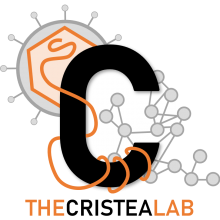HVint: A Strategy for Identifying Novel Protein-Protein Interactions in Herpes Simplex Virus Type 1
Type
Human herpesviruses are widespread human pathogens with a remarkable impact on worldwide public health. Despite intense decades of research, the molecular details in many aspects of their function remain to be fully characterized. To unravel the details of how these viruses operate, a thorough understanding of the relationships between the involved components is key. Here, we present HVint, a novel protein-protein intraviral interaction resource for herpes simplex virus type 1 (HSV-1) integrating data from five external sources. To assess each interaction, we used a scoring scheme that takes into consideration aspects such as the type of detection method and the number of lines of evidence. The coverage of the initial interactome was further increased using evolutionary information, by importing interactions reported for other human herpesviruses. These latter interactions constitute, therefore, computational predictions for potential novel interactions in HSV-1. An independent experimental analysis was performed to confirm a subset of our predicted interactions. This subset covers proteins that contribute to nuclear egress and primary envelopment events, including VP26, pUL31, pUL40, and the recently characterized pUL32 and pUL21. Our findings support a coordinated crosstalk between VP26 and proteins such as pUL31, pUS9, and the CSVC complex, contributing to the development of a model describing the nuclear egress and primary envelopment pathways of newly synthesized HSV-1 capsids. The results are also consistent with recent findings on the involvement of pUL32 in capsid maturation and early tegumentation events. Further, they open the door to new hypotheses on virus-specific regulators of pUS9-dependent transport. To make this repository of interactions readily accessible for the scientific community, we also developed a user-friendly and interactive web interface. Our approach demonstrates the power of computational predictions to assist in the design of targeted experiments for the discovery of novel protein-protein interactions.

